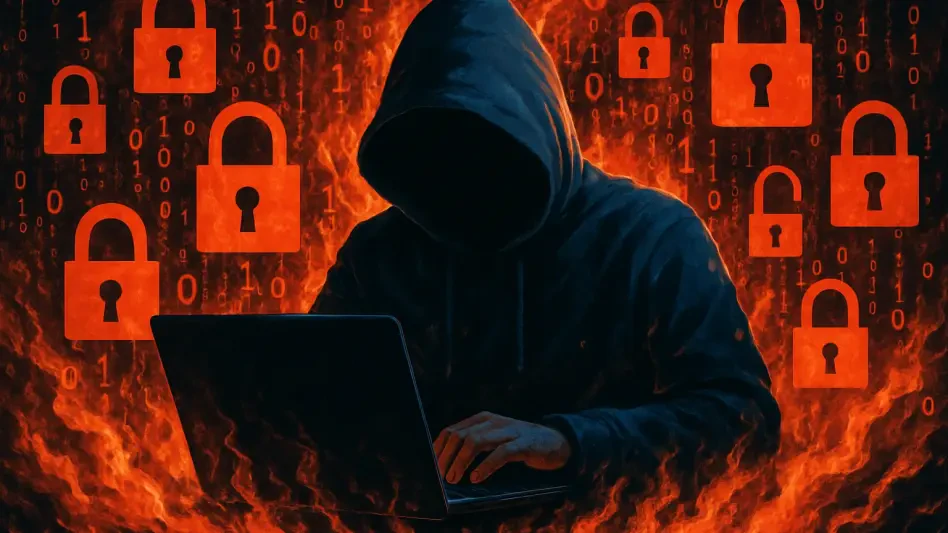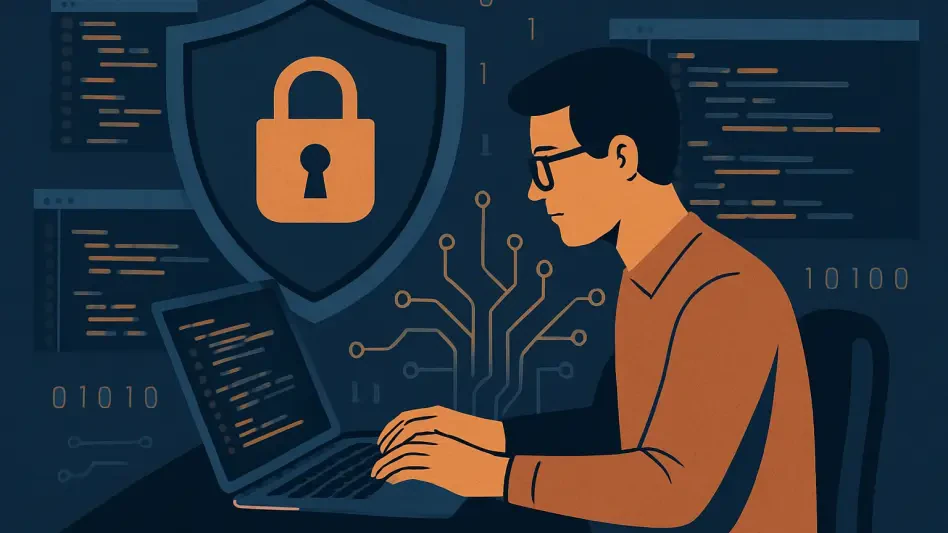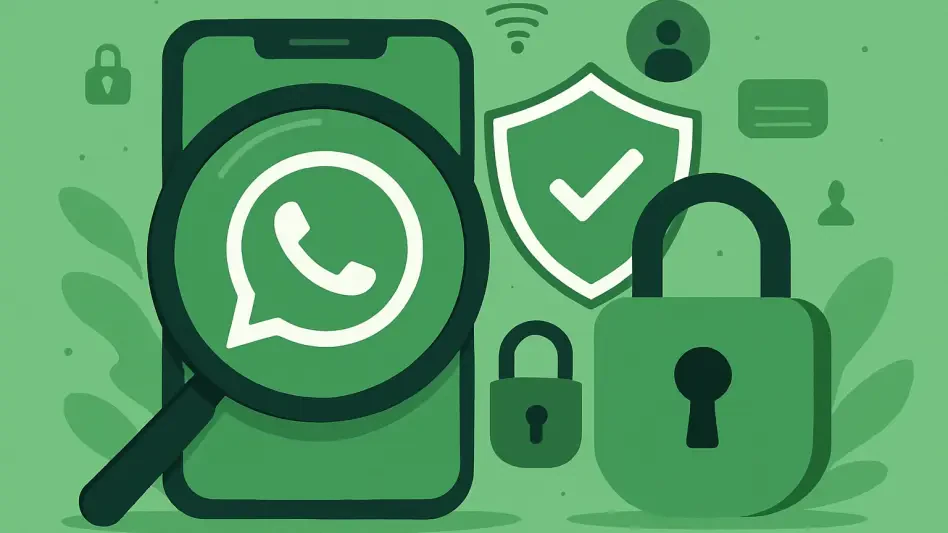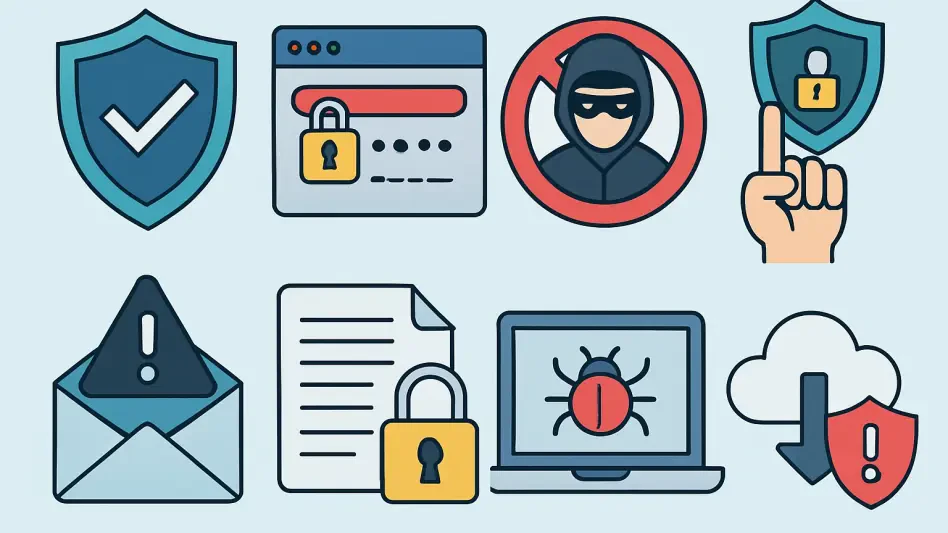Imagine a global automaker, renowned for luxury and innovation, brought to a complete standstill by an unseen enemy lurking in the digital shadows, a scenario that became the harsh reality for Jaguar Land Rover (JLR). This prominent UK-based company under Tata Motors faced a severe cyber-attack on September 2 that disrupted its operations, halted production, sent shockwaves through supply chains, and raised urgent questions about cybersecurity in industrial sectors. This roundup gathers diverse perspectives from industry experts, cybersecurity analysts, and affected stakeholders to unpack the implications of this breach, compare varying opinions on recovery strategies, and explore what it means for corporate resilience in an era of escalating digital threats.
Unpacking the Incident: What Happened to JLR?
The Nature of the Attack: Sophistication and Speculation
Insights from cybersecurity professionals reveal a consensus on the alarming sophistication behind the breach, attributed to a group called “Scattered Lapsus$ Hunters.” Many analysts suggest this could be a coalition of known hacking entities, pointing to a trend of collaborative attacks targeting high-profile industries. Their methods likely exploited vulnerabilities in JLR’s digital infrastructure, showcasing a level of coordination that caught even seasoned observers off guard.
Another viewpoint emphasizes the uncertainty surrounding the attackers’ motives. Some industry watchers argue that financial gain through ransomware might be the primary driver, while others speculate on a broader intent to disrupt critical infrastructure. This divergence in opinion highlights the challenge of attributing responsibility in a landscape where cyber threats evolve rapidly, often outpacing defensive measures.
A third angle focuses on JLR’s immediate response, with experts commending the decision to proactively shut down systems to limit damage. However, there’s a split in thought on whether this reactive step was enough, with some suggesting that preemptive investments in advanced threat detection could have mitigated the scale of disruption. This debate sets the stage for deeper discussions on preparedness versus reaction.
Immediate Fallout: Supply Chain Chaos and Worker Impact
Feedback from supply chain consultants paints a grim picture of the cascading effects following the shutdown. The halt in manufacturing disrupted JLR’s extensive network of suppliers and logistics partners, leading to delays in parts delivery and invoicing. Several industry voices note that smaller partners, heavily reliant on JLR’s operations, faced acute financial strain, raising concerns about long-term relational damage.
On the human side, labor advocates and union representatives, including voices from the British workers’ union Unite, have highlighted the toll on third-party employees. Reports of job losses among logistics and parts supply workers have fueled calls for government-backed support, such as furlough programs. This perspective underscores a critical gap in corporate crisis planning—addressing the human cost beyond operational metrics.
Contrasting opinions emerge on the scale of impact, with some economic analysts arguing that while the short-term disruption is severe, JLR’s market position may shield it from lasting damage. Others caution against underestimating the ripple effects, pointing to delayed vehicle wholesales as a potential drag on consumer confidence. These differing takes reflect the complexity of assessing economic fallout in real time.
Recovery and Response: Diverse Strategies and Opinions
JLR’s Phased Restart: Progress or Precaution?
Industry observers have shared varied reactions to JLR’s phased recovery, which saw key systems like IT invoicing and parts logistics restored by September 25. Many applaud the cautious approach, noting that rushing production without securing systems could invite further breaches. Collaboration with the UK’s National Cyber Security Centre (NCSC) and law enforcement is often cited as a model for corporate-governmental partnership in crisis management.
However, a more critical stance comes from some cybersecurity specialists who argue that the extended production pause—lasting at least until October 1—signals deeper, unresolved vulnerabilities. They suggest that while restoring digital tools is a step forward, the lack of a clear timeline for full operations raises questions about undetected flaws in JLR’s infrastructure. This skepticism fuels a broader dialogue on balancing speed with security.
A third perspective, from manufacturing consultants, focuses on the practical challenges of restarting production. They highlight the intricate process of aligning restored systems with physical operations, warning that even minor glitches could delay progress. This pragmatic view contrasts with more optimistic takes, illustrating the tension between technical recovery and operational reality.
Political and Social Dimensions: Calls for Systemic Change
Stakeholder feedback reveals strong opinions on the political fallout of the breach. Discussions involving the UK Business Secretary on September 23 with JLR executives and supply chain representatives are seen by many as a positive step toward coordinated recovery. Policy experts argue that such engagement could pave the way for enhanced government support mechanisms for industries hit by cyber crises.
Labor-focused commentators, however, express frustration over the pace of worker protection measures. The push for furlough programs to shield affected third-party employees has garnered mixed reactions, with some viewing it as essential and others questioning its feasibility amid budget constraints. This divide reflects a larger debate on whether governments or corporations should bear primary responsibility for crisis mitigation.
A forward-looking opinion from policy analysts suggests that this incident might catalyze stricter cybersecurity regulations. They propose that mandating regular audits and resilience training for industrial firms could prevent similar disruptions. While not universally endorsed, this idea underscores a growing recognition that systemic change may be necessary to safeguard both economies and workforces.
Lessons Learned: Industry-Wide Cybersecurity Insights
Corporate Vulnerabilities: A Shared Concern
Across multiple sources, there’s agreement that JLR’s ordeal exposes a universal vulnerability among major corporations. Cybersecurity advisors stress that even well-resourced firms can fall prey to sophisticated attacks, urging a shift from reactive to proactive defense strategies. Regular system audits and real-time threat monitoring are frequently recommended as baseline protections.
A differing angle comes from economic strategists who focus on the ecosystem-wide impact of such breaches. They argue that the interconnected nature of supply chains amplifies risks, advocating for collaborative defense frameworks where companies share threat intelligence. This communal approach, though less common, is gaining traction as a potential game-changer in industrial security.
Another insight, from crisis management professionals, emphasizes the importance of pre-established response protocols. They note that JLR’s structured, albeit slow, recovery highlights the value of having clear contingency plans. This advice contrasts with calls for technological solutions alone, suggesting that human readiness plays an equally vital role in navigating cyber crises.
Practical Tips for Businesses: Building Resilience
Drawing from various expert contributions, several actionable tips emerge for corporate leaders. Investing in advanced cybersecurity tools, such as AI-driven threat detection, is a recurring recommendation, often paired with the need for continuous employee training to recognize phishing and other entry-point risks. These measures aim to fortify defenses at both technical and human levels.
Another suggestion, from risk management consultants, centers on fostering partnerships with governmental bodies like the NCSC. They argue that access to national resources and expertise can accelerate recovery, as seen in JLR’s case. This perspective differs from those prioritizing internal solutions, highlighting the value of external collaboration in tackling sophisticated threats.
A final tip, echoed by operational advisors, focuses on prioritizing employee welfare during disruptions. Transparent communication and support for affected workers, including third-party staff, are seen as critical to maintaining trust and morale. This human-centric advice rounds out the technical and strategic recommendations, offering a holistic approach to resilience.
Reflecting on a Digital Wake-Up Call
Looking back, the cyber-attack on Jaguar Land Rover served as a stark reminder of the fragility of industrial giants in the face of digital threats. The diverse opinions and strategies discussed revealed a shared urgency to rethink cybersecurity as a core business priority. As recovery unfolded, the incident illuminated gaps in preparedness, from supply chain vulnerabilities to worker support, that demanded attention beyond a single company’s scope.
Moving forward, businesses must consider adopting a multi-layered defense strategy, integrating cutting-edge technology with robust crisis protocols. Exploring partnerships with government agencies for enhanced support and advocating for industry-wide standards could prevent future disruptions. Additionally, delving into resources on cybersecurity frameworks and staying updated on evolving hacker tactics will equip leaders to anticipate rather than merely react to the next digital challenge.








